The Rushes retail development is an area once occupied mainly by Loughborough’s Electricity Works. ‘Electricity’ takes its name from the Greek word elektron, meaning amber, hence the ‘Amber Rooms’.
A print and text about The Amber Rooms.
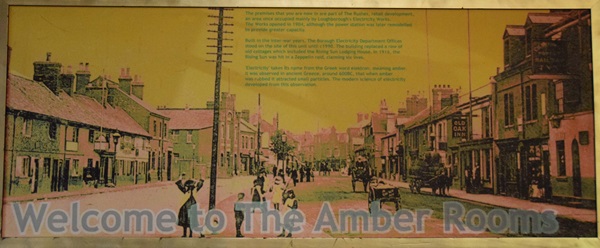
The text reads: The premises that you are now in are part of The Rushes, retail development, an area once occupied mainly by Loughborough’s Electricity Works.
The works opened in 1904, although the power station was later remodelled to provide greater capacity.
Built in the inter-war years, The Borough Electricity Department Offices stood on the site of this unit until c1990. The building replaced a row of old cottages which included the Rising Sun Lodging House. In 1916, the Rising Sun was hit in a Zeppelin raid, claiming six lives.
‘Electricity’ takes its name from the Greek word elekton, meaning amber. It was observed in ancient Greece, around 600BC, that when amber was rubbed it attracted small particles. The modern science of electricity developed from this observation.
A print and text about Brush Electric Light Corporation.
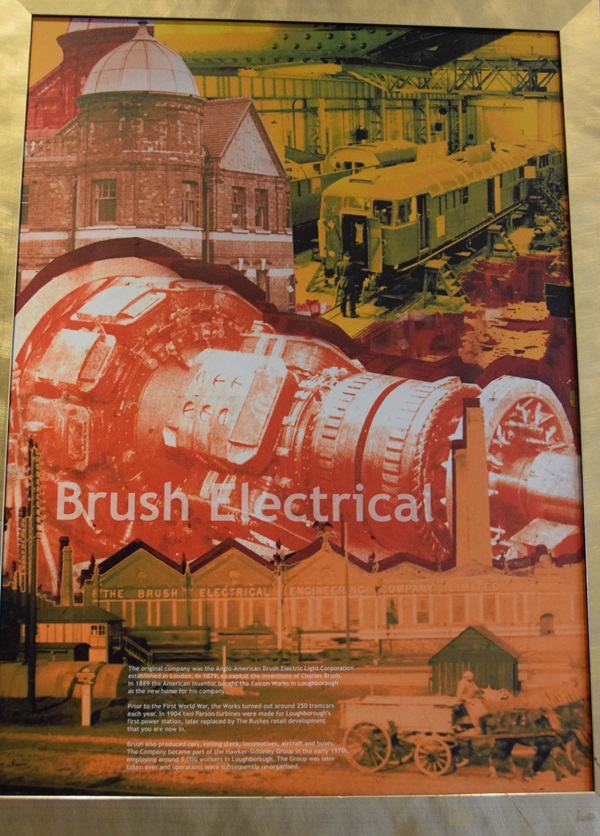
The text reads: The original company was the Anglo-American B
rush Electric Light Corporation established in London, in 1879, to exploit the inventions of Charles Brush. In 1889 the American inventor bought the Falcon Works in Loughborough as the new home for his company.
Prior to the First World War, the works turned out around 250 tramcars each year. In 1904 two Parson turbines were made for Loughborough’s first power station, later replaced by The Rushes retail development that you are now in.
Brush also produced cars, rolling stock, locomotives, aircraft and buses. The company became part of the Hawker-Siddeley Group in the early 1970s, employing around 5,000 workers in Loughborough. The group was later taken over and operations were subsequently re-organised.
Prints of The Rushes.
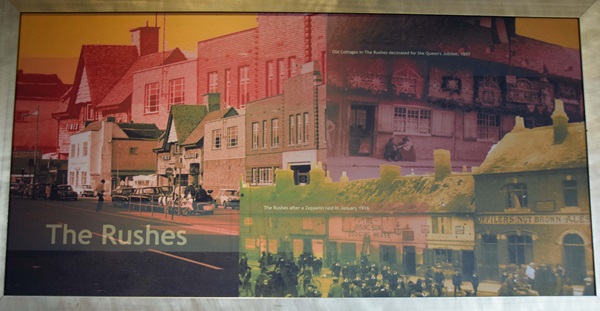
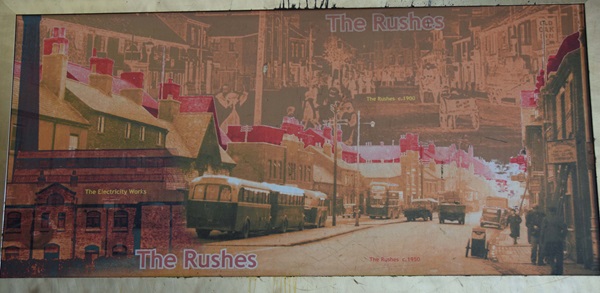
A print and text about bell-making family, the Taylors.
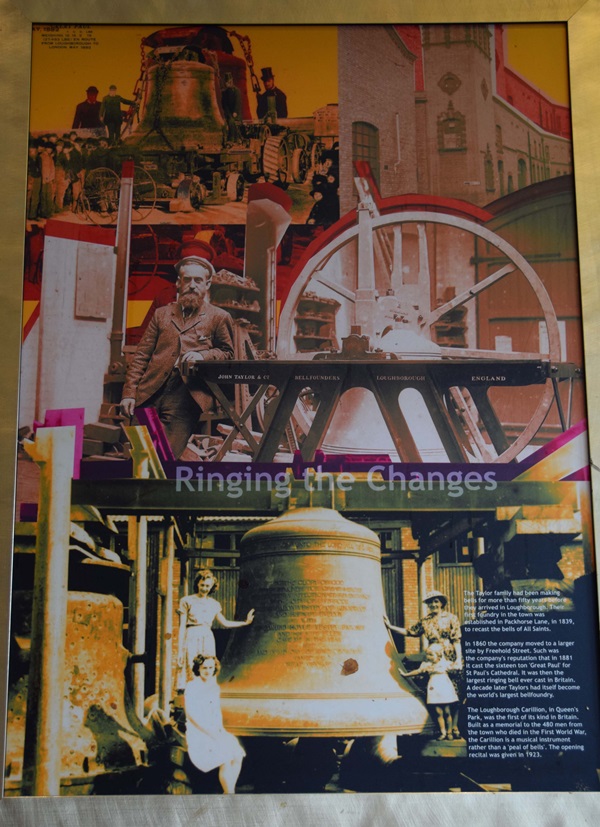
The text reads: The Taylor family had been making bells for more than fifty years before they arrived in Loughborough. Their first foundry in the town was established in Packhorse Lane, in 1839, to recast the bells of All Saints.
In 1860 the company moved to a larger site by Freehold Street. Such was the company’s reputation that in 1881 it cast the sixteen ton ‘Great Paul’ for St Paul’s Cathedral. It was then the largest ringing bell ever cast in Britain. A decade later Taylors had itself becomes the world’s largest bell foundry.
The Loughborough Carillion, in Queen’s Park, was the first of its kind in Britain. Built as a memorial to the 480 men from the town who died in the First World War, the Carillion is a musical instrument rather than a ‘peal of bells’. The opening recital was given in 1923.
Prints of the bells.
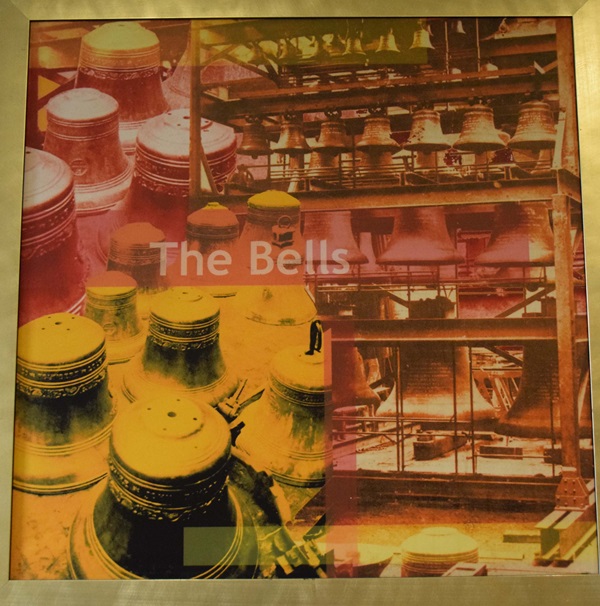
Prints of schools and scholars.
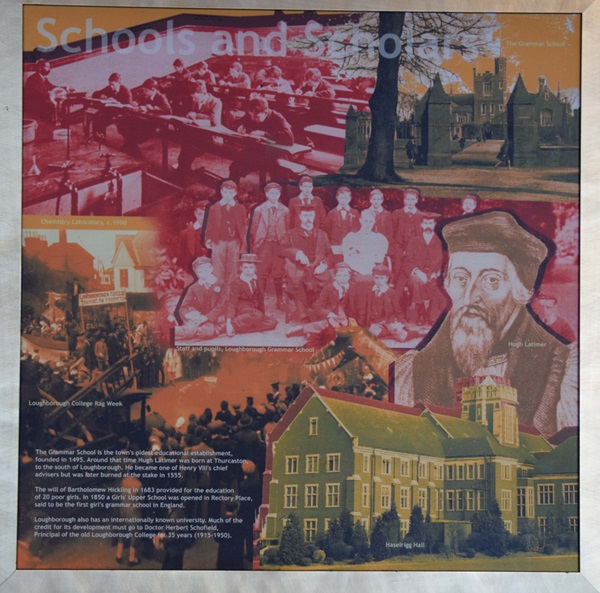
The text reads: The Grammar School is the town’s oldest educational establishment, founded in 1495. Around that time Hugh Latimer was born at Thurcaston, to the south of Loughborough. He became one of Henry VII’s chief advisers but was later burned at the stake in 1555.
The will of Bartholomew Hickling in 1683 provided for the education of 20 poor girls. In 1850 a girls’ upper school was opened in Rectory Place, said to be the first girl’s grammar school in England.
Loughborough also has an internationally known university. Much of the credit for its development must go to Doctor Herbert Schofield, principal of the old Loughborough College for 35 years (1915-1950).
Prints and text about lace and hosiery.
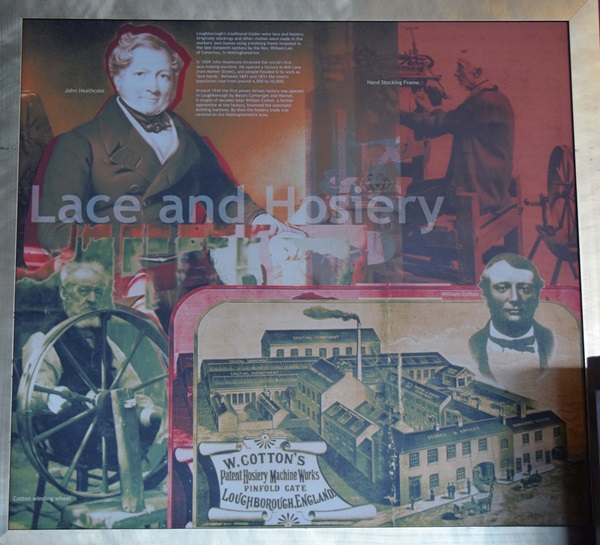
The text reads: Loughborough’s traditional trades were lace and hosiery. Originally stockings and other clothes were made in the workers’ own homes using a knitting frame invented in the late sixteenth century by the Rev. William Lee of Calverton, in Nottinghamshire.
In 1809 John Heathcote invented the world’s first lace-making machine. He opened a factory in Mill Lane (now Market Street), and people flooded in to work as ‘lace hands’. Between 1801 and 1831 the town’s population rose from around 4,500 to 10,800.
Around 1840 the first power-driven factory was opened in Loughborough by Messrs Cartwright and Warner. A couple of decades later William Cotton, a former apprentice at the factory, invented the automatic knitting machine. By then the hosiery trade was centred on the Nottinghamshire area.
If you have information on the history of this pub, then we’d like you to share it with us. Please e-mail all information to: pubhistories@jdwetherspoon.co.uk